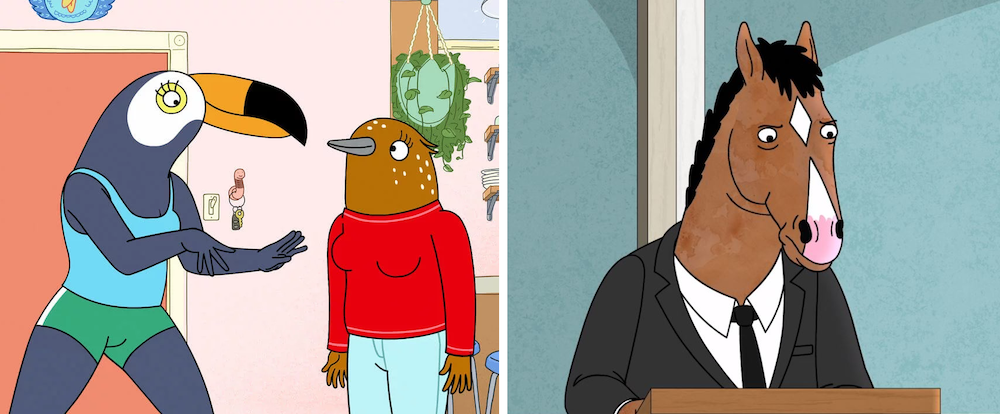Classic icebreaker question: what is your favorite movie?
My answer is usually received with a chuckle. “Really? Ratatouille?” Yes, really. The scene in which Remy teaches his brother Emile how to taste food is the first thing that pops into my head whenever I hear that question: the yellow pulse against a black background as Emile tastes the nuttiness in the cheese, the streaks of light flowing across the screen as he feels the sweetness and tanginess of a grape, and then the two combining into fireworks as he stuffs his mouth with both the cheese and the grape.
That scene left me in awe as a kid. I was seeing taste. The film being animated was what charmed me, but for others it’s what makes them chuckle when I say it’s my favorite movie. Having spent several of their early years glued to a TV screen watching nothing but cartoons, most people associate animation with childhood. Just like the hotdogs — on white buns streaked with ketchup and mustard — you would enjoy as a kid, animations are considered to be simpler and less sophisticated, something you eventually grow out of.
Despite their artistry, several exceptional animated films or TV shows would never top or even enter the “favorites list” of many. For them, although entertaining, the medium is not “deep” enough to be highly regarded. TV shows like BoJack Horseman and Tuca & Bertie, however, are demonstrating that animated horses and toucans can tell stories more human at their core than those told by actual humans acting in front of a camera.

For those unfortunately unaware — or, perhaps, those fortunate enough to still have the chance to watch the show for the first time — BoJack Horseman follows the life of BoJack, an anthropomorphic horse who was the star of a 90s sitcom, but who now deals with the lack of meaning in his post-popularity life in Hollywood. The show is able to seamlessly transition from hilarious, with its witty jokes and puns, to depressing but thoughtful in a single scene. The show is one of the most adventurous pieces of TV I have encountered. It does what animation does best, but it also goes beyond that, beyond what is expected from animations.
In the episode “Fish Out of Water” of Season 3, BoJack travels to a film festival under the sea and has to wear an oxygen-filled bubble to breath, making him inaudible. For a solid 22 minutes (out of 26), the episode features no dialogue. Despite the lack of spoken words, the episode is never boring or confusing. BoJack’s surreal adventure as he travels through the ocean floor in order to return a lost baby seahorse keeps you watching. Thanks to what is only possible through animation, the director shows you BoJack — a nihilistic and narcissistic man — develop feelings of parenthood for the first time in his life. No dialogue is necessary.
Two seasons later, the show producers did something previously unthought of for animation. If they could do an episode with no dialogue, what if they did the opposite? In the episode “Free Churro” of Season 5, BoJack delivers a 20-minute long monologue. Instead of depending on animation to create a wacky setting or plot to keep viewers tuned in, the producers bet it all on their writers and actors. And their gamble paid off. The episode is considered as one of the best of the series — my personal favorite so far. BoJack’s underwater adventure showed that animation can do what live-action can’t, but his monologue proved that it can also do what live-action does best.
And the masterminds behind BoJack Horseman have started exploring more sides of humanity through more anthropomorphic animals. Released at the beginning of May, Tuca & Bertie was created by Lisa Hanawalt, a producer of BoJack Horseman, and follows the stories of two 30 year-old best friends Tuca and Bertie, a toucan and a songbird respectively. The show depicts female friendship, the anxiety that accompanies modern adulthood, and other challenges that women face in their lives. Despite sharing the drawing style of BoJack Horseman, Tuca & Bertie differs substantially and stands on its own. The bleaker BoJack Horseman uses the surreal for a gag here and there, but it’s still, at its core, a study of the human condition. Tuca & Bertie, on the other hand, fully embraces the absurd and surreal — in one scene, one of Bertie’s breasts jumps off her chest declaring that she can no longer deal with workplace harassment. With quick cuts and nonsensical transitions, the show carries itself with a more vibrant and light-hearted tone.
With only its first season currently available, although already intriguing, Tuca & Bertie is still in the process of building the world around its characters. Hopefully, the show receives the same backing BoJack Horseman did, so that they can keep on demonstrating that animations are not “for children only”.

